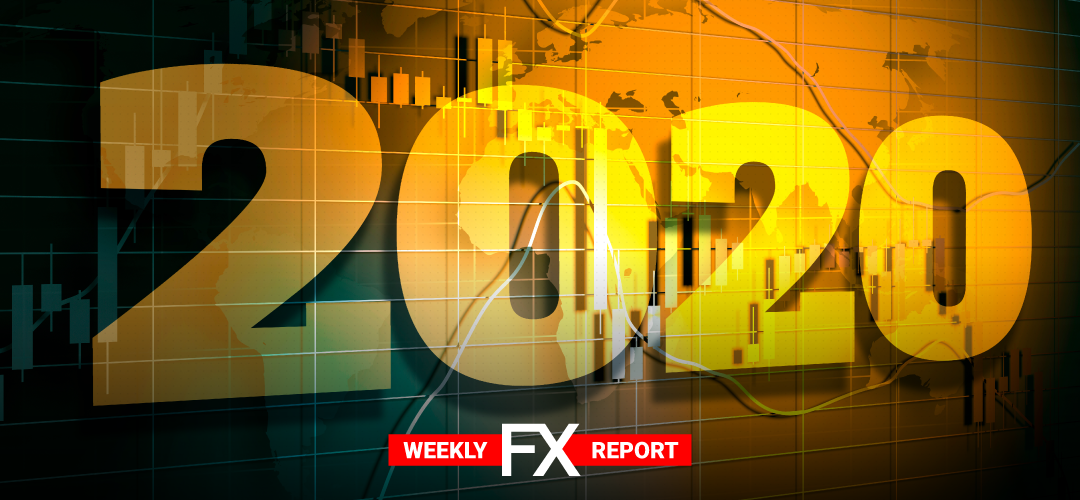Mid-East tensions escalated after US drone strike kills Iran’s Major-General Soleimani, considered to be one of the most powerful men in Iran.
Iran vowed “severe revenge” for his death. U.S. President Donald Trump warned of a “major retaliation” if Iran hit back. On Sunday, Iran further distanced itself from the 2015 nuclear agreement with world powers.
U.S. President Donald Trump threatened to impose sanctions on Iraq if U.S. troops were forced to withdraw from the country. Safe-haven assets enjoyed demand.
Oil prices jumped by about 1% on Monday, pushing Brent above $70 a barrel, as rhetoric from the United States, Iran and Iraq fanned Mid-East tensions.
On the trade front, the US and China are set to sign the trade deal on January 15, while China announced more stimulus.
The US dollar kicked off 2020 with a recovery – undoing the losses it suffered in late 2019 due to end-of-year flows.
The EUR/USD moved slightly this week. German and Eurozone manufacturing PMIs beat their estimates, with readings of 43.7 and 46.3, respectively.
GBP/USD rebounded last week and posted gains. A week prior, the pound suffered its worst week in over two years, with losses of 2.5%.
The AUD/USD lost ground last week, dropping below the symbolic 0.70 level. There were no major Australian events in the shortened holiday week.
The Japanese yen enjoyed its strongest week since July as Dollar/yen fell 1.2%. The pair closed just above the 108 line, as the yen capitalized on a broadly-weaker U.S. dollar.
The Canadian dollar continued its winning ways last week, as USD/CAD dropped below the symbolic 1.30 line for the first time since October 2018. The loonie continued to post gains, as it climbed 2.2% in December, its best month since June.
LQDFXperts – The week ahead: New Year kicks off with Mid-East tensions
The markets open to a full trading week with business returning to normal. Data from the Eurozone over the week will see the release of the flash inflation and the ECB meeting minutes. This week’s highlights are U.S nonfarm payrolls and wage growth.
- On Monday (07.01) Euro-zone inflation is due to come. The preliminary release for December 2019 is forecast to show that underlying inflation remained at 1.3%. Also, the United States non-manufacturing activity report will be released by the Institute of Supply Management.
- On Tuesday investors await of Eurozone Retail Sales, expected to rebound in November, with an estimate of 0.6% and CPI Flash Estimate with a forecast of 1.3%.
- On Thursday (09.01) all eyes are on ECB meeting minutes. The European Central Bank publishes details from the ECB meeting, overseen by President Christine Lagarde for the first time.
- On Friday (10.01) Investors will be keen to see US Non-Farm Payrolls report coming out. November’s jobs reports was a blockbuster – no fewer than 266,000 jobs were gained in the world’s largest economy. Estimates point to the fact that the U.S. unemployment rate will be held steady at 3.1%. The monthly payroll numbers are however forecast to show just 172k jobs being added during the last month of the year. Wage growth will probably remain steady, rising at a monthly pace of 0.2%.
Follow this week’s economic calendar.
PLEASE NOTE The information above is not investment advice.
Sources: Reuters, BBC, FX street
